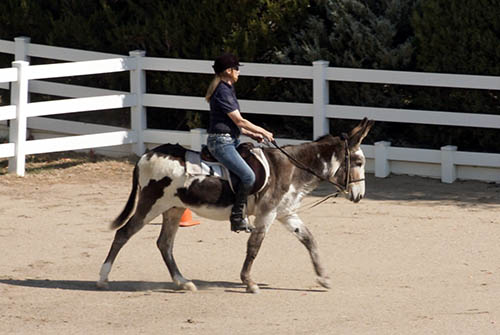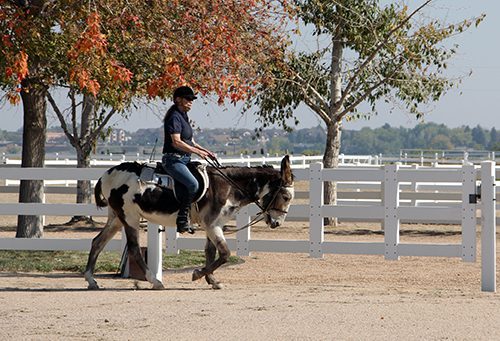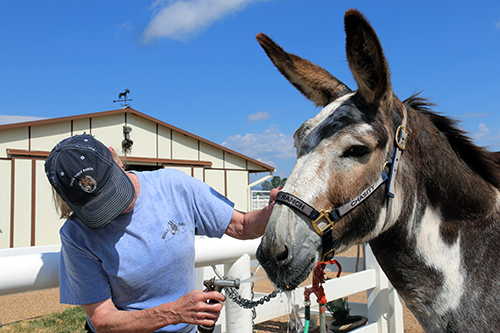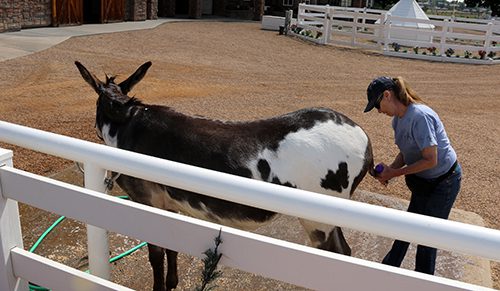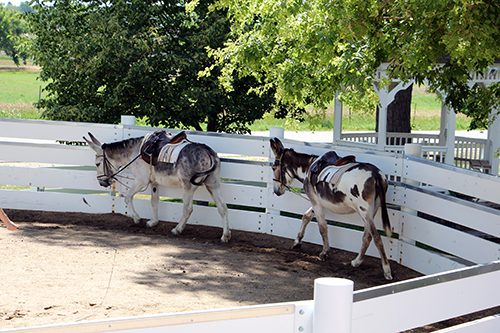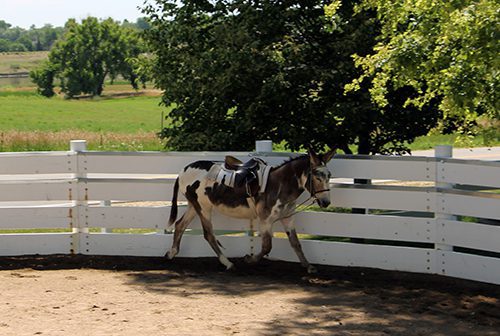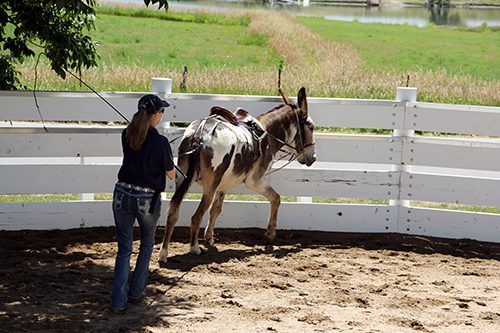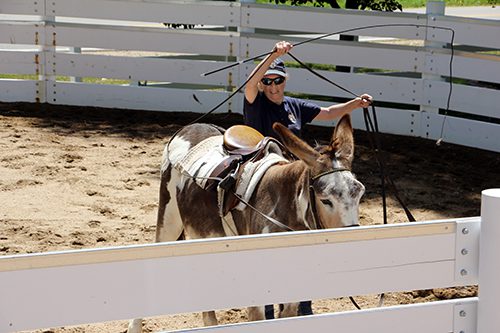
Uncategorized








LTR Training Tip #81: Body Clipping for Show
Body clipping in a natural order with respect for your equine’s patience will help the process go much more easily.
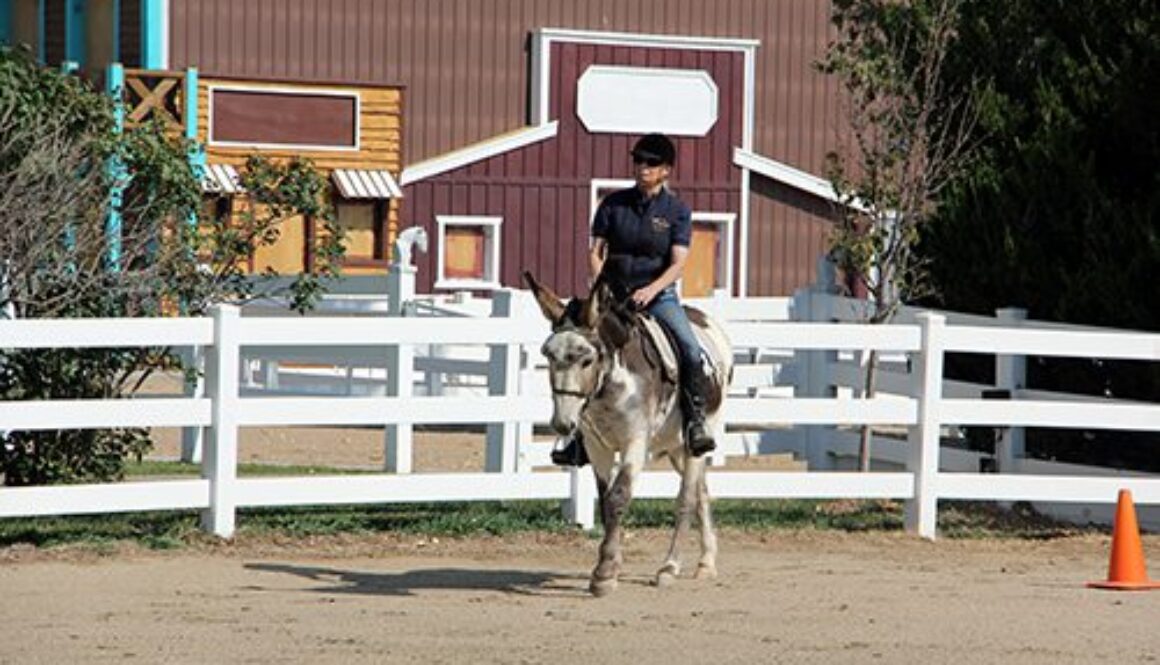

CHASITY’S CHALLENGES: Riding in the Open Arena: 10-6-20
Chasity and Wrangler enjoy working with each other nearby and seem to learn things a lot quicker with a lot less resistance. It also affords me the ability to work more animals in less time. It’s a win-win situation. It doesn’t mean they won’t work by themselves. They will do that as well when they get to work with and without each other. This consistent routine with minimal variety greatly reduces anxiety and bad behaviors. The “Elbow Pull” is convenient for tying one while the other is working. There is no need to fuss with halters and lead ropes. I tie Wrangler while Chasity waits her turn patiently. It is a passive way to teach them to stand quietly when tied.
Today we will be going to the outdoor arena for riding in the Hourglass Pattern, but I opt to do some warm-up in the Round Pen first because I do not want to ask Chasity to trot in the Hourglass Pattern just yet. It is better to get her exercise done first, so we can then work on fine tuning her response to the aids: hands, seat and legs. Trotting will come later when she is consistent in her good posture, ultra-light in the bridle, moving off my legs easily and is following my seat.
Wrangler is tied outside the arena just as he has been tied outside the Round Pen. Chasity comes through the gate, stands squarely and receives her reward with no abrupt changes to the routine.
Chasity stands quietly as I mount, settle gently onto her back and politely receives her reward. She is enjoying being in a larger space, but is not anxious to walk off. She will do so only when I ask.
Chasity’s rein back is greatly improved and she is offering more steps upon request each time. She will only step one step at a time as I ask for them, and will also stop when I relax my seat and loosen the reins. I maintain a light connection to her mouth and I give the cue to move forward with my calves wrapped lightly around her belly. I maintain this contact with my legs and just nudge her on each side through the turns while I give a slight squeeze/ release with my little finger in the direction of travel.
Chasity enjoys the feeling of “being hugged” by my legs with only gentle nudges from each side that push her into the direction of travel, and a nudge from both sides at once should she lose energy.
Most of the time, my legs lightly hug her sides and allow her the freedom to move while they simply support the even balance through the straight lines in the pattern. As we turn, the inside leg will move forward to the girth to keep her erect while the outside leg is back further and supports the bend to the arc of the turns.
When Chasity is balanced in self-carriage, the “Elbow Pull” remains loose, she is light in the bridle and sensitive to my seat and legs. Wrangler watches her with intense interest! He knows he will soon have a turn!
Keeping lessons short, slow and accurate will enhance Chasity’s ability to learn. We track once around the Hourglass Pattern with circles at the cones, then cross the diagonal and do the same in the opposite direction.
In the beginning, I do not use the ground rails as I did for leading exercises. It is more important for Chasity to focus on balancing my newly added, shifting weight before asking her to shift her own body weight and mine over any obstacles. I want her secure in her own balance with me aboard before we do any obstacles.
Chasity is learning to execute an energetic, forward working walk in complete postural balance. She makes a smooth turn, maintains her forward energy and tracks up the centerline of the pattern.
Chasity comes to a nice, balanced halt, waits patiently for a few seconds and then reins back easily upon request.
I dismount, loosen her girth and release the “Elbow Pull.” Chasity remains attentive and then stretches her neck and spine before we exit the arena. It was a relaxing and comfortable workout for us both. Maybe next time, we will be able to add the trot…if she offers it! We want to keep things controlled and accurate so she builds up the core elements in her body symmetrically. This is vital to good health and optimum performance!




LTR Training Tip #80: Straight Forward Under Saddle Obstacles
Straight forward obstacles will help your equine to maintain and even improve his balance and coordination with a rider on board.


CHASITY’S CHALLENGES: Fine Tuning Chasity’s Response: 9-22-20
In the many years of the management and training of equines, I have learned how much the details really count! I learned about how much easier things can be when you are open minded and allow your education to grow. For instance, I learned how to train without the bit and bridle, but then learned that in doing so, I was not able to control postural development in the equine’s body. Thus, I invented my “Elbow Pull” as a response to Richard Shrake’s “Rhythm Collector.” I also found out that my “Elbow Pull” could be used in conjunction with the mild Eggbutt snaffle bit in a multitude of different ways, even for tying an animal. It is practically weightless and easily slips through the bit rings for optimum adjustment while the equine is in motion. It does need to be adjusted differently with horses, but the results are amazing as you can see with Chasity’s physical improvement.
Chasity’s huge cresty neck is practically gone now and the neck sweat has not been needed since she graduated to the Round Pen. This was because I have been repetitious in the way we execute ALL movements, even going through gates, in good equine posture! When we do this, Chasity uses ALL the muscles in her body to do these moves, and in this case, stretches across her spine to pull the Supraspinous ligament back into alignment while reducing the fatty tissues with efficient metabolic circulation. She is a lot more comfortable in her body, so standing quietly is no longer an issue.
Chasity has learned her verbal commands and responds promptly and quietly. Since donkeys do not freely exhibit as much energy as horses and mules, I only ask for five rotations at walk followed by five rotations at trot. As she is better able to keep her balance in good posture, the “Elbow Pull” remains loose, with very little tension throughout her whole workout.
Only now, instead of halting, resting and then changing direction, I do the whole exercise with a reverse in the middle for the change of direction. Her core is becoming more stable in her self-carriage. The muscles across her spine are becoming stronger and better able to support the weight of a rider.
She is relaxed, moves freely forward and most of the time halts four-square. Since she was a bit sticky with the reverse under saddle during her last lesson, I will add a step and ask for the reverse from the ground first.
Chasity understands what I mean and backs easily upon the command to “Back.” I then walk to the other end of the Round Pen and ask her to come to me with a verbal “Come,” also using hand signals. There is nothing more important than communicating clearly.
I politely ask Chasity to “Whoa,” with my hand put up like a “Stop” sign, and then mount her while she stands still. I pay special attention to lowering my seat slowly onto her back.
As I did in the Tack Barn when I first mounted her, I lean over to both sides and offer her reward of crimped oats for standing still, sit quietly in the saddle while she chews and then asked her to first rein back. I keep my contact VERY light, with an alternating squeeze/release from my little fingers on the reins, and a backward motion from my legs and seat.
When ready to go forward, I nudge her with my legs and then WAIT for her response. If she does not move right away, I nudge her again after waiting a few seconds. It will often take donkeys a little longer to THINK about what you are asking. It is far more productive to give them that time. Chasity walks off obediently and keeps her mind on her work as she passes Wrangler, waiting patiently for HIS turn!
I now add small circles randomly as we walk around the Round Pen. We pay special attention to staying erect and bending through the rib cage. I keep things slow, controlled and accurate.
We do “S” turns through the middle of the Round Pen to change direction. Speed can come later as the strength in good posture is developed and the connection to her bit remains light at all times.
I have discovered with this approach, there is hardly ever (if ever) any resistance or bad behaviors. Lessons go smoothly and safely for both of you. This is something I greatly appreciate with age!
Chasity maintains her good balance and cooperative attitude as we ride for about 15 minutes, practicing the circles, halts, “S” turns and reverses. Chasity comes to a “square” halt. I wait quietly for a few seconds.
Then I ask Chasity for a rein back and she compies easily…still light in the bridle. I dismount and tell her how pleased I am with her. I playfully massage her upper gums to illicit a smile! They like having their gums rubbed!
It was a very satifsfying workout for us both! Chasity follows me as we exit the Round Pen and get ready for Wrangler’s turn! Allowing one animal to wait while another is worked, makes it easier to do the training. They seem to get support from their “Friends.” Occasionally working them alone as they gain confidence lets them know that being with you can always be fun and that you will always return them to their friends. This approach allows you to deepen the relationship between you, so you become as good a friend to them as their equine companions. This greatly eliminates the incidence of your equine becoming herdbound.
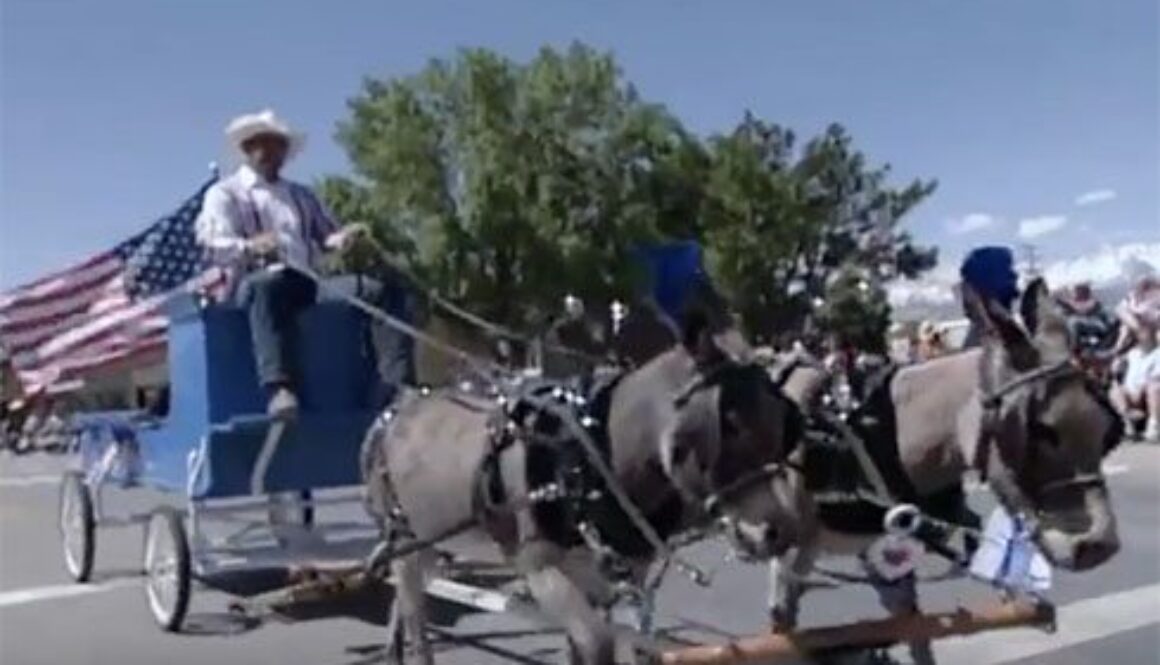



CHASITY’S CHALLENGES: Chasity’s First Ride: 9-15-20
Chasity has come a long way since the end of March. She has worked hard and is now enjoying true strength in a balanced and correct equine posture. Her health has greatly improved as has her mental attitude. She is happy to be working with her companion Wrangler and they both enjoy being able to share their lessons. Sometimes they are walked together to the Round Pen and sometimes they are taken separately. This promotes independence while preserving their friendships with each other. I do not believe in deliberately separating my equines from their equine friends as that will only create anxiety. I want them to know that I am also a friend that they would like to spend time with or without their other companions. Sometimes they are worked alone and sometimes they are worked together. Tying one outside the Round Pen while working the other teaches them to stand quietly while tied with purposeful patience. I leave nothing to chance, so I break everything down into doable steps to promote success. Chasity is mounted in the work station first and rewarded with crimped oats from her back. This routine will keep her attention when we finally go to the Round Pen as she is mounted.
Chasity executes the gate perfectly, stands quietly to have her “Elbow Pull” adjusted and is then sent on the rail to lunge in preparation for mounting. She is now keeping her “Elbow Pull” loose at all times. Her balance and good posture is exceptional now considering her imperfect conformational restrictions.
I slow Chasity to the walk before asking her to execute a nice balanced reverse and she complies easily. It is important in the beginning to keep things slow and accurate. Speed can come later with much better results.
Chasity will now walk on command and will not change her gait until she is asked. She fully understands the verbal commands. She has smooth, upward and downward transitions as she changes gaits. She promises to be a smooth ride!
I ask Chasity for a halt and offer her a reward for a job well done! She is patient and stands quietly as I mount.
As I did in the work station, I offer her a reward from both sides. When she has finished chewing her oats, I ask her for the rein back. I use an even squeeze/release on the reins with a bit more pressure on one side and then the other as each front leg comes back. Even one step is sufficient for now. Chasity will give more with each new lesson.
Chasity walks calmly forward and I sit quietly to allow her to balance my weight. She keeps her body erect and bends through her rib cage as she executes an “S” turn through the middle to change direction. It is important to execute these moves with the lightest pull from my little fingers on the reins to encourage Chasity to become ultra-light in the bridle.
Donkeys tend to “lean” on the bit, so doing this kind of work in the Round Pen is really important if you want your donkey to be light in the bridle and respond to the lightest pressure from your seat, fingers and legs.
Be prepared to spend a lot of time on this. It will enhance all your donkey’s responses to your cues. Chasity executes a nice reverse and maintains her ideal balance at the walk afterwards. This is not easy for her to do with her hips being higher than her shoulders, but I am very pleased with her progress. She will only get better!
Chasity does a perfect halt, but is a bit reluctant to rein back. This move is difficult for her, so I will just take my time and accept what she has to offer. I know she is always honest in her attempts. One step is good, so I call it quits and reward her efforts.
Wrangler is outside the Round Pen waiting patiently for his “Lady Love” to complete her lesson. Then we all head back to the work station after our enjoyable time together! More lessons will promote more learning and more refined performance! We all look forward to our time together!


LTR Training Tip #79: Seat Leg Cues
In order for your seat and leg cues to be accurate and clear to your equine, you will need to improve stability in your own seat and balance.


Tis the Season – Loretta & Lainey
This is an update from All About Equine Rescue.
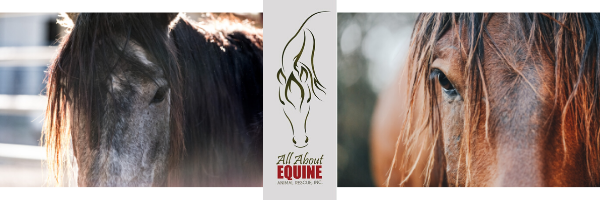
All About Equine Animal Rescue, Inc.

It’s that time of year we share with you the work we’ve all been doing throughout the year. We missed last year while we were in the middle of our Big Move, so we have some catching up to do. The stories you’ll read this month are your donations, volunteering, likes, shares, and other support at work. We hope you enjoy!
LORETTA & LAINEY


AAE welcomed two donkeys from a family who offered to care for them temporarily to help a friend who was going through a divorce. The friend got the donks for free on Craigslist. The friend moved out of state, and the donks were left behind. The family didn’t have any equine experience and could not afford to provide for them. The friend said to find them a new home. Much to our dismay, when we arrived to pick them up, Loretta was standing at their feeder on a bed of triple mix and didn’t want to move much. Lainey was an endearing lil’ goofball.


Loretta, the gorgeous brown gal, has a beautiful long, amber mane that looks just like a horse. She was in such poor condition; she was so skinny, and her hooves were so neglected. Dr. Stolba came for an intake exam, collected blood samples, and took radiographs of her hooves. In a nutshell, old, malnourished, Cushing’s Disease, laminitis/founder, and arthritis, and she hadn’t gotten any help with any of this for a long time. It’s a lot, but this poor girl was a fighter, and deserved a chance to get some help and lots of love.


Loretta has been getting an appropriate diet, daily meds for her arthritis and Cushing’s, and her hooves are a work in progress. Her comfort level has improved, but she’s not pain free. (Many of us deal with chronic pain day in and day out, but it doesn’t mean we don’t want to live any more). She’s been in pads on her front hooves, and it’s helped. We’re working on shoes next to see if they offer some additional help. She’s eating well, she mosey’s around, and she thoroughly enjoys her humans grooming her, and loving and doting on her.
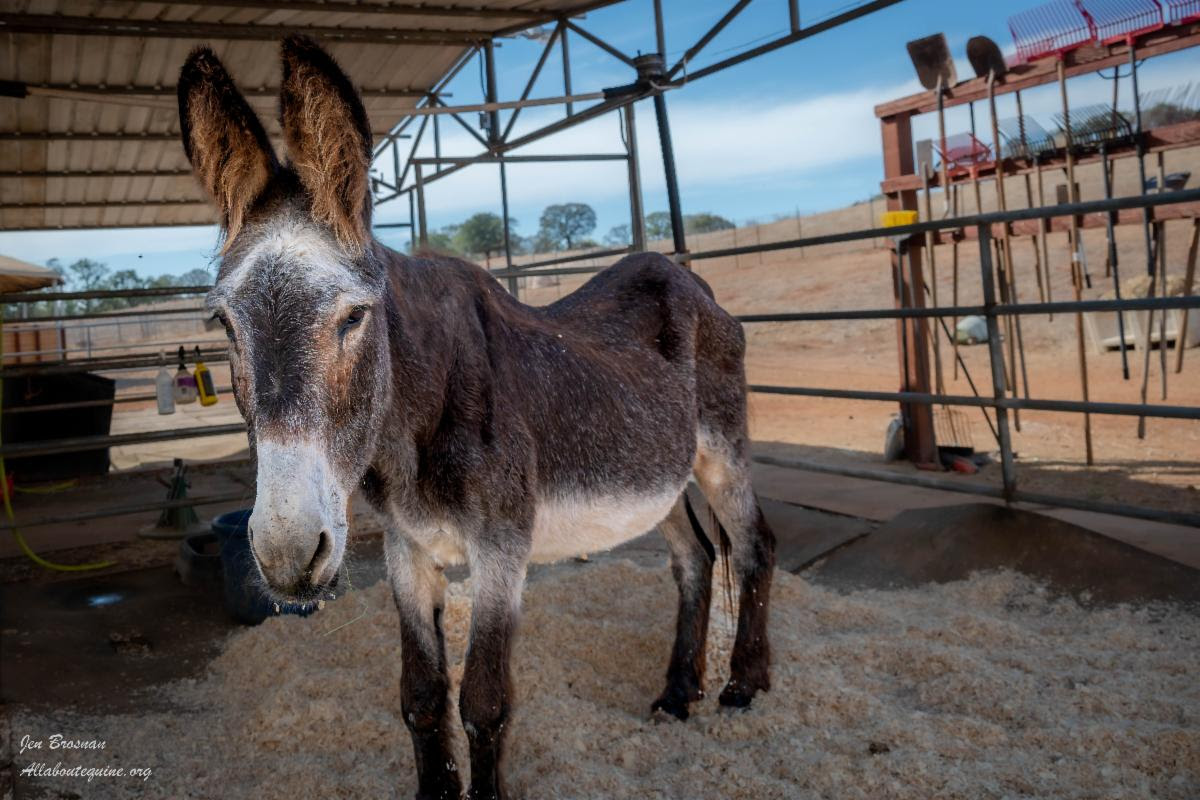
For now, her scale is tipping on the side of life. When that changes, and we can’t help her any more, we’ll make the compassionate call to give her love ’til the end. She’s just a really special old soul.
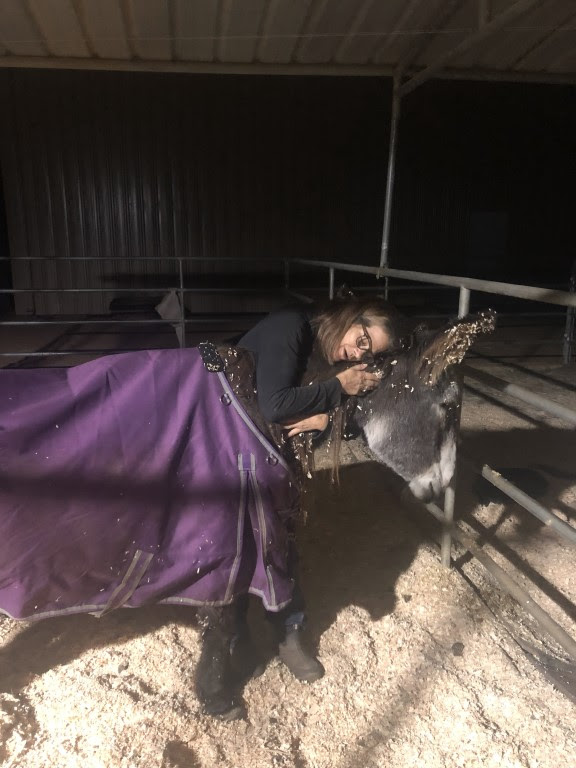
The gray donk, Lainey, on the other hand, was obese, and her hooves needed some care. She was in much better condition than Loretta. This girl is a hoot!
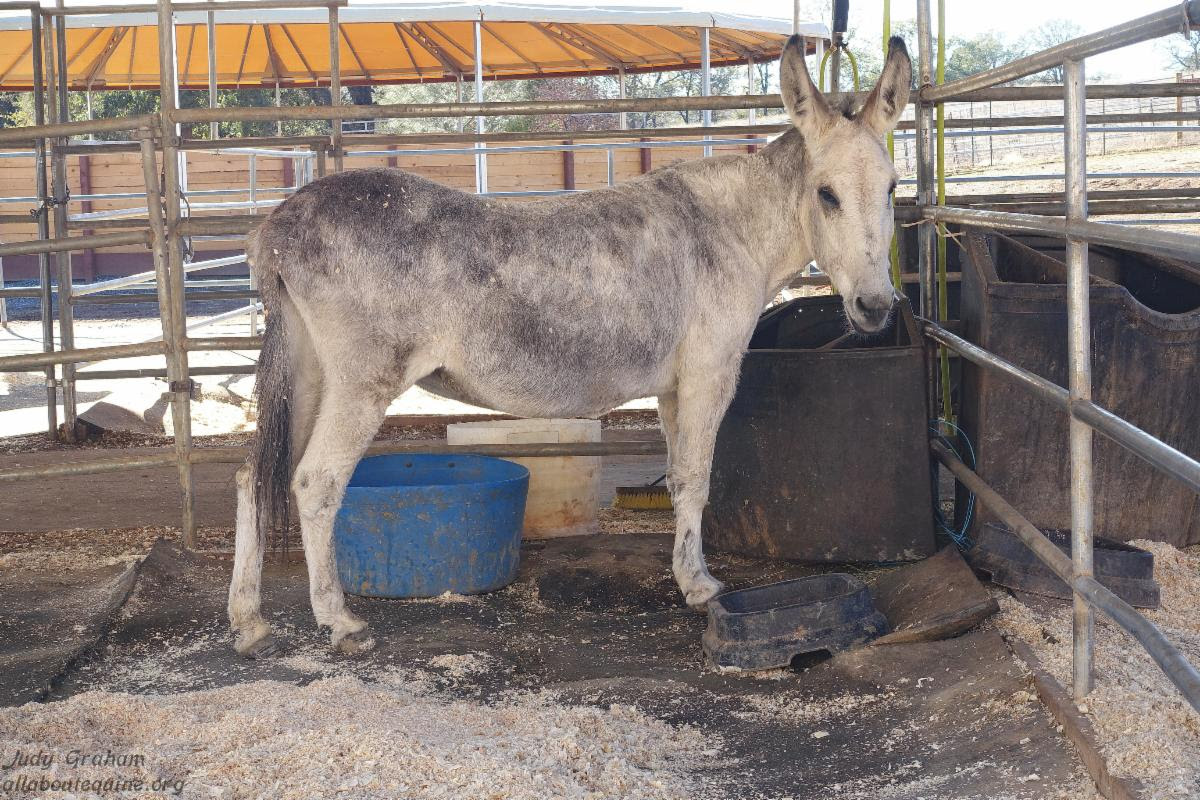
Dr. Stolba checked in with Lainey, as well. A new diet was her biggest issue. Both needed dentals, but we held off until Loretta had more time to settle in. Lainey is estimated mid-teens. Loretta’s upper teeth are worn to the gums, and there’s wasn’t a lot to float, but at least their mouths should be more comfortable now. Both girls are reasonable with hoof handling and the farrier. Not ideal, but that should improve as they are handled and trimmed more regularly.


This baby got back! The large bulges on each side are large hernias from being spayed. Her intestines hang from each side, and she doesn’t appreciate her sides being touched. Her fat is slowly melting, but she really enjoys her food and her shavings!

These girls are both ever so sweet, and they hold no grudges toward humans. The two are bonded, and Loretta, especially, at least for now, needs her girl, Lainey by her side (adjacent paddocks).
| Donate Now and Double Your Impact! |
| With enormous thanks to two very generous offers from anonymous supporters, donations to AAE from now through New Years Eve will be matched dollar for dollar, up to $10,500!
We are just over $9800 toward our goal $10,500 match right now. Click on the donate button below to see current status. |

Thank you for your support helping horses each and every day!
Your donations, volunteering, adopting, and social media shares & likes allow us to make this work possible!


LTR Training Tip #78: Transitions
Transitions in your equine’s gait, speed or direction should always be smooth and fluid and not bouncy.
‘Tis the Season – Martina
This is an update from All About Equine Rescue.

All About Equine Animal Rescue, Inc.

It’s that time of year we share with you the work we’ve all been doing throughout the year. We missed last year while we were in the middle of our Big Move, so we have some catching up to do. The stories you’ll read this month are your donations, volunteering, likes, shares, and other support at work. We hope you enjoy!
MARTINA

Martina and her very young filly, Valentine, came to AAE from the DreamCatcher Wild Horse and Burro Sanctuary in March 2018. Valentine was only days old. AAE had been supporting DreamCatcher’s herd reduction efforts since April of 2017 after the long illness and passing of their Executive Director, Barbara Clarke in November of 2016. Martina was thin and hungry with baby in tow, but she knew where to go. She showed up at the DreamCatcher barn with Valentine after not coming down in the Fall for the Winter. Sadly, winter conditions at the sanctuary are fierce (for California, anyway), and AAE got a call. Martina is a BLM branded mustang. She appeared to have minimal human contact when she arrived.

Once back at AAE, she got hoof and dental care, vaccines, deworming, and a microchip. She has had intermittent handling with intermittent breaks. Once in Pilot Hill, she’s spent most of her time on acreage with her mustang herd. She’s making very slow progress. Martina can be approached and haltered in a small space, with patience and a slow approach. Her hooves can be trimmed with sedation. She’s nervous and protective, but tries to understand what’s asked of her, but she’s really not much interested in human interaction.

Though she is coming around, Martina has been challenging, and she needs a person very experienced with mustangs to continue her progress. She will likely do better in an environment where she is out of her herd, few distractions, and working daily with her own person. Her person should have no agenda, and no timelines, other than wanting to develop a trusting relationship and build confidence, a long term project, giving her the time she needs.
This beautiful gal has been her long enough! Let’s find her her own human. Martina is current with dental and hoof care, vaccines, and deworming. She has a microchip.

If you’d like to make a year end donation in honor of Jennings to support AAE’s ongoing operations into 2023, you can click the donate button to give a gift that counts.

With enormous thanks to two very generous offers from anonymous supporters, donations to AAE from now through New Years Eve will be matched dollar for dollar, up to $10,000!
Thank you for your support helping horses each and every day!
Your donations, volunteering, adopting, and social media shares & likes allow us to make this work possible!
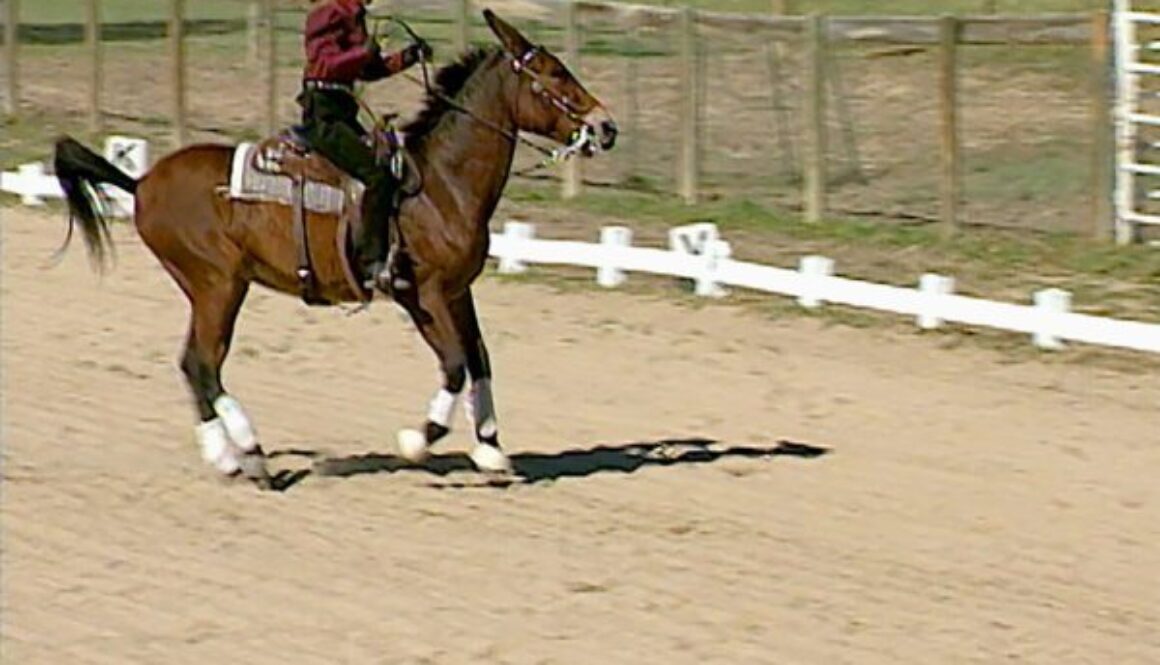

LTR Training Tip #77: Simple and Flying Lead Changes
Correctly done Flying Lead Changes should take place simultaneously, so it is important to build strength and balance through Simple Lead Changes before even attempting Flying Lead Changes.


CHASITY’S CHALLENGES: Yearly Baths: 7-14-20
Each year, I try to pick the hottest week in July to do the equine’s yearly baths. The mules and horses have shed out their winter coats, except for a strip of hair on the mules’ bellies, and the donkeys are getting closer to being completely shed out. This makes a difference when you are trying to get them dry after their baths. They all begin to grow their winter coats in September.
Their natural hair coats will insulate them from the heat and cold and will protect them from insects, so I do not advise clipping them unless you are showing. Even then, it is not advisable to clip the hair inside of the ears! I bath as many as four at a time and in smaller friendly groups like Wrangler and his “Lady Love,” Chasity! I am polite, considerate and respectful, so it is always an enjoyable experience for all! I begin with the introduction to the hose on their front legs.
Wrangler and Chasity enjoy their yearly baths to get off the dirt that has built up during the year. I offer a drink to their lips and afterwards move to their foreheads, being careful not to get water in their eyes or ears. I spray the water gently into their mouths and we “water pick” the teeth! Playful antics like this teach them to always remain calm and keep things safe between us. This keeps interest to a maximum and intimidation to a minimum.
When they are approached in this manner, Chasity and Wrangler can enjoy the cool water on a hot day! Chasity knows I am being careful and doesn’t pull away, then takes a sip from the hose.
I reward Chasity with crimped oats from my fanny pack for being such a good girl. Then I rinse off the oats that were stuck to her whiskers as she gazes at the other equines in the pens nearby who are anxiously awaiting their turns.
Her attention returns to me and I work my way up her forehead to her forelock and ears. I make sure the spray is light and doesn’t sting so she will keep her ears laid back for the rinsing. I would hate to get water in Chasity’s ears, but if by accident I do, I just back off and allow her to shake her head to get the water out before I resume.
We use Tres Semme (Breakage Defense) shampoo and Aussie 3X Conditioner on the manes and tails only, and just water on their bodies to keep their hair coats from drying out. In the case of Chasity’s white legs, I will use the shampoo and conditioner there, too. The result is a healthy and shiny hair coat year round.
I spray the water over their bodies and then follow up with the serrated side of the shedding blade to scrape the dirt from their body. I keep going over each spot until the water runs clear. I pay special attention to the legs and any places that flies might have laid eggs. I will scrape these places with a stiff brush or with my fingernails and apply Neosporin to these spots, and any sores, after they are dry. I scrape off the excess water with the smooth side of the shedding blade. Then Chasity and Wrangler are put on the hot walker to dry.
When Wrangler and Chasity are dry, I sprinkle Johnson’s Baby oil in the manes and tails and spray for flies with Farnam Tri-Tech 14. The baby oil will keep them from chewing on each other’s manes and tails. Those who have sensitive skin around their eyes will receive fly masks. Chasity and Wrangler do not need them. When entering or leaving an area, we ALWAYS execute gates exactly the same way! That way, there is no confusion and chaos that could result in resistant behaviors.
Chasity and all my equines always know exactly what is expected and know exactly what they need to do.
Chasity will be rewarded with her favorite crimped oats for her cooperative behavior. Good manners, and being polite and respectful are paramount to getting your equine’s full cooperation! Even if Chasity does go right out into her pen and roll afterwards, she always seems to enjoy having clean, healthy skin and hair. And, most of all, she enjoys her time with me and looks forward to the next time!
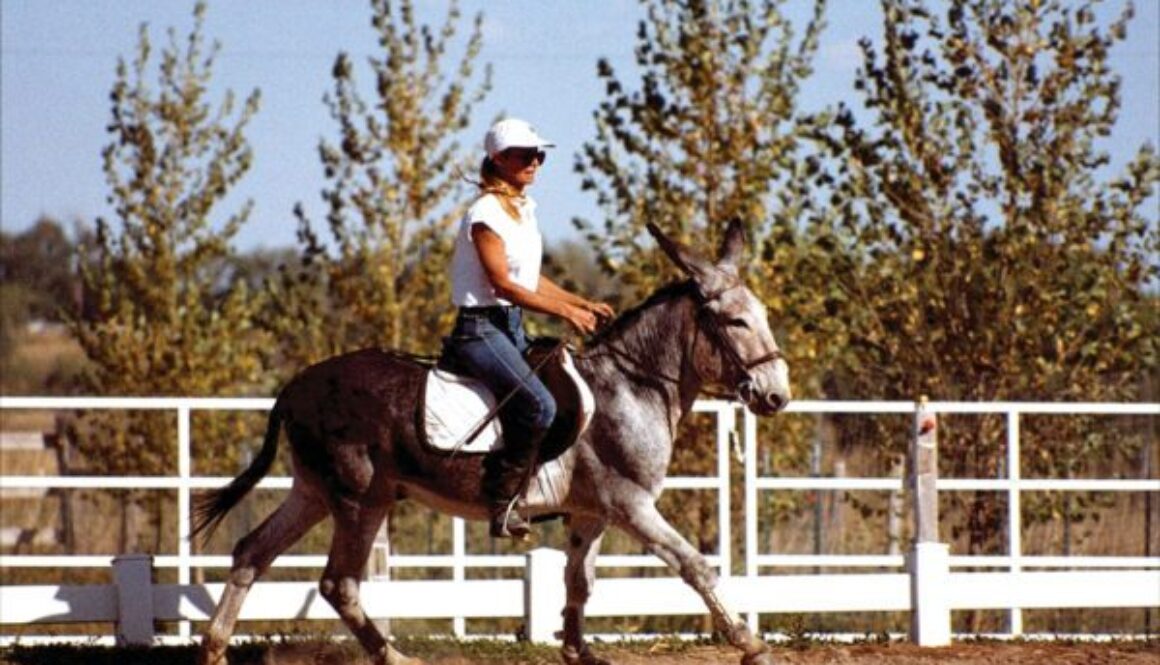

LTR Training Tip #76: Canter Under Saddle in the Open Arena
Starting your equine at canter in an open arena requires a systematic and simple approach to sustain good balance and posture.


CHASITY’S CHALLENGES: Ground Driving Chasity: 7-7-20
Chasity continues to improve. We have cut the size of her obese, cresty neck by 70%. Her back is finally elevated. The spinal and abdominal muscles are much better conditioned and support her good posture. She has come a long way. She is submissive to the “Elbow Pull” and ready to begin her combination exercises in Lunging and Ground Driving. Chasity is happy that she gets to do these exercises with her “boyfriend,” Wrangler! He is her inspiration. They are so funny together!
Chasity executes the gate perfectly and then stops to pose for a picture with me. Then we adjust her “Elbow Pull” and make sure she flexes at the poll to submit. This self-correcting restraint will provide resistance if she tries to carry her head too high which would result in hollowing her neck and back, and thus, compromising her good equine posture.
Once everything is adjusted on Chasity and Wrangler, we pose for a picture. Then they both go obediently to the rail and begin work at the walk. I have added the reins to Wrangler’s bridle to keep him from carrying his head too low. That is not an issue with Chasity. It is not usually a problem with with Wrangler either, but it is in the nineties today and very hot. Wrangler gets very lazy in the heat!
They are both stepping out nicely and exhibiting a pretty fair “working walk.” After five rotations at the walk, I ask for the trot. They are both stepping well underneath their centers of gravity and Chasity is submitting to the pressure from the “Elbow Pull.” This means she is in better equine posture with improving self-carriage.
After five rotations at the trot, I ask them for a halt and they are prompt in their response. They are rewarded and then proceed forward and after one rotation, I ask them to reverse. It is the best reverse yet!
I am so proud of Chasity! She is really holding her good posture nicely for prolonged periods of time now, even at the trot!
Chasity is gaining a lot of core strength and power to her gaits. The halts are mostly square on the landing and do not need to be corrected. Chasity is finally learning to use her hindquarters properly and she is no longer getting locked up in the right hip joint. It is now adequately supported symmetrically by the core elements: muscles, tendons, ligaments and soft tissue. Her joints operate correctly and will not wear irregularly.
After five rotations at walk and then trot in the opposite direction, Chasity was finally ready for her first Ground Driving lesson! When asked, she walked off nicely.
I had Ground Driven Wrangler first, so Chasity got to see what this was all about. She submitted softly to the lines and remained “on the bit” as we walked along. She turned easily when asked to do the “S” turn through the middle of the Round Pen.
But suddenly, we had a “Donkey Moment” when she abruptly bolted toward Wrangler! I let the lines slide through my hands, hoping she would slow down…but she didn’t! I dug my heels into the ground to try to stop her, holding the lines with just one hand so I wouldn’t lose my balance. Wrangler just dropped in behind her at the walk.
Chasity was at a fast trot around Wrangler when he decided to help me by leaning his body into the lines. This put more pressure on her bit and helped me to get her slowed down…Thanks, Wrangler!!!
Once she had slowed down, Wrangler moved away and allowed me to turn her into the rail and ask for a reverse to the right. Chasity calmed down immediately and decided to comply with my wishes… thankfully!
Chasity was still full of energy, but submitted to the pressure on the lines as I walked behind her in sync with her hind legs. I slowly crept back up the lines with my hands and got a bit closer to her hindquarters
Then I asked Chasity for the halt and a few steps of the reinback…not too many steps at first. I rewarded her efforts with a handful of crimped oats. Her first time on the drive lines had gone very well indeed… even WITH the “Donkey Moment!” It’s always good to keep your sense of humor when working with donkeys and be ready to be VERY patient! Donkeys need to process things THEIR WAY!













